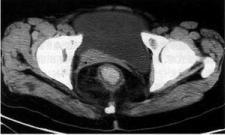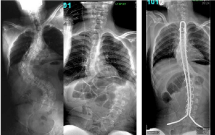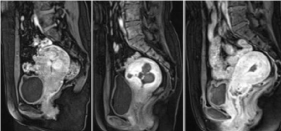Abstract
Objective: To observe and analyze the effect of sufentanil on postoperative intravenous analgesia and clinical anesthesia so to provide valuable guidance for practical work.
Methods: In this study, 200 patients who had been treated in Heze Medical College, Heze, 274000, China were enrolled as research objects from August 2016 to May 2019. They were divided into study group and control group, each containing 200 cases, and given different anesthesia modes. The patients in the study group were given the sufentanil dominated maintenance anesthesia mode, while the fentanil dominated maintenance anesthesia regimen was applied to the patients in the control group. The anesthetic effects of the two groups were compared.
Results: The VAS score of the study group was (5.4±2.1) points, while that of the control group was (5.5±2.4) points, showing no significant difference between the two groups, p>0.05. Comparing the spontaneous breathing recovery time and awake time of the study group were significantly shorter than those of the control group, p<0.05. The rate of adverse reactions in the study group (6.00%) was significantly lower than that (18.00%) of control group, p<0.05.
Conclusion: The application of sufentanil in postoperative intravenous analgesia can produce better results, obtain effective clinical anesthesia results, and have higher safety and reliability.
Keywords: Sufentanil; Postoperative Intravenous Analgesia; Analgesia; Clinical Anesthesia
Introduction
During clinical operation, anesthesia is a crucial link, which plays a role in sedation, analgesia, systemic or local muscle relaxation and ensuring the safety of operation. The choice of anesthetic drugs affects the anesthetic effect to a large extent. If anesthetic drugs are abused or applied unscientifically and irrationally, the human body will form a higher dependence, which increases the duration of respiratory inhibition, and exerts a influence on patients' waking up and spontaneous breathing [1-3]. In addition, At the same time, the abuse of anesthetic drugs or non-scientific use of anesthetic drugs will also lead to bradycardia, nausea and vomiting, and other adverse reactions, preventing patients from recovering as soon as possible after surgery. Therefore, in clinical anesthesia and intravenous postoperative analgesia, it is necessary to select appropriate anesthetic drugs, which can achieve good anesthesia and analgesia effects, and protect the human body, so as to improve the effectiveness of clinical anesthesia and intravenous postoperative analgesia, and have reliable safety at the same time.
Fentanyl and sufentanyl are commonly used anesthesia drugs in clinical practice. As a derivative of fentanyl, sufentanil has better anesthesia and analgesic effect, can break through the blood-brain barrier and cell membrane quickly, which exerts a very ideal effect in clinical anesthesia [4,5].
In order to explore the effect of sufentanil on postoperative intravenous analgesia and clinical anesthesia, this study carried out group comparison to explore the results, aiming to provide valuable guidance for clinical treatment.
Data and Method
General data
In this study, 200 patients who had underwent surgical treatment in Department of Clinical Medicine, Heze Medical College, Heze, 274000, China from August 2016 to May 2019 were enrolled as research objects.
Inclusion and exclusion features: All of selected patients were surgical patients, meeting the clinical indications of anesthetic drugs. Patients with severe liver and kidney dysfunction, patients with opioid allergy, patients with severe cardiopulmonary chronic diseases and mental disorders were excluded. All patients had the right to know and signed the informed consent. The study was approved by the hospital ethical association.
Method
Half an hour before surgery, 0.5mg atropine was injected subcutaneously for both groups of patients. Before entering the operating room, the veins of patients in the two groups were routinely opened to ensure the normal connection of the monitor. After resting for 10 minutes, measurement and observation were carried out, and 0.1mg/kg liexil combined with 0.12mg/kg vecuronium bromide was used as anesthesia induction. On this basis, [atients in the control group were administered with fentanyl (Yichang Renfu Pharmaceutical Co., Ltd., SFDA approval number H20003688) at dose of 2 mu /mg, and patients in the research group were administered with sufentanyl (Yichang Renfu Pharmaceutical Co., Ltd., SFDA approval number H20054171) at dose of 0.5 mu /kg. Successful intubation in both groups was achieved by continuous pumping of propofol at a rate of 30ml per hour. After surgical disinfection and dressing, patients in the control group were given fentanyl pump to maintain anesthesia, while patients in the study group were given sufentanyl pump to maintain anesthesia. Patients in both groups were suspended from administration half an hour before the end of surgery, meanwhile the analgesia pump was switched on for continuous controlled intravenous analgesia. Patients in the study group were administered with 1μg/mL sufentanil analgesia at rate of 2mL/h, while patients in the control group were given morphine routine analgesia.
The chemical name of Fentany is N- [l-(2-phenylethyl)-4- piperidine] -n-phenylpropanamide, its molecular formula is C22H28N20. Fentanyl is a white crystalline powder with bitter taste, and its aqueous solution is acidic. Fentanyl is easily soluble in hot isopropanol, soluble in methanol, and slightly soluble in water or chloroform. Fentanyl has a melting point of 150 ~ 153?, which decomposes simultaneously during melting. Fentanyl is an opioid receptor agonist, which belongs to a powerful narcotic analgesic with similar pharmacological effects to morphine. Animal experiments have shown that its analgesic effect is about 80 times that of morphine. The analgesic effect of fentanyl was produced quickly, but lasted for a short time. It took effect 1 minute after intravenous injection, peaked at 4 minutes, and maintained effect for 30 minutes. The intramuscular injection of fentanyl takes effect about 7 minutes after the injection and lasts about 1-2 hours. Fentanyl has less respiratory inhibition and less adverse reactions than morphine. Fentanyl is suitable for analgesia during and after gynecological surgeries. Fentanyl is also used to prevent or alleviate post-operative delirium. Fentanyl can also be used in combination with anaesthesia as an adjunct to anesthesia. The combination of fentanyl and haloperidol is a "diazepam analgesic", which is used for analgesia in large-scale dressing change and minor surgery [6].
Sufentanyl is a derivative of fentanyl, which is used medicinally as a citrate. Sufentanyl, which mainly acts on μ opioid receptors, is about twice as lipophilic as fentanyl and more likely to cross the blood-brain barrier. Compared with fentanyl, sufentanyl had higher binding rate with plasma protein and smaller distribution volume. Although its elimination half-life is shorter than that of fentanyl, its affinity with opioid receptors is stronger than that of fentanyl, so the analgesic intensity is greater and the duration of the effect is longer (about twice as long as that of fentanyl). Sufentanil undergoes extensive biotransformation in the liver to form n-dehydrocarbyl and o-demethyl metabolites that are excreted by the kidneys. Norsufentanil has pharmacological activity and its titer is about 1/10 of that of sufentanil, which is equivalent to fentanil, which is one of the reasons for the long duration of sufentanil action. Sufentanil can be used as an adjunctive anesthesia and anesthesia induction for cardiovascular surgery anesthesia.

Figure 1: Surgical procedure for ulcerative colitis.

Figure 2: Spinal surgery.
Observational indexes
After surgery, the two groups of patients were compared and observed in terms of pain degree, wakefulness time, spontaneous breathing recovery time and other indicators. Twelve hours after the operation, visual visual analogue score (VAS) [7] was used to evaluate the pain degree of the patients. On a scale of 0 to 10 from painless to severe pain, the more intense the pain, the higher the score. In addition, the rate of adverse reactions in the two groups was analyzed.
Statistical method
Statistical analysis software SPSS21.0 was used to process data. The measurement data were expressed by mean ± average (x±s), with t test conducted for intergroup comparison. Enumeration data were expressed by natural (n) and percentage (%), with X2 used for intergroup comparison. The intergroup difference is of statistical value when P<0.05.
Results
Of the 200 patients, 55 underwent colon surgery (as shown in Figure 1), 50 underwent spinal surgery (as shown in Figure 2), 35 underwent gallbladder surgery (as shown in Figure 3), 43 underwent uterine surgery (as shown in Figure 4), and 17 underwent other types of surgery. By means of random grouping, the patients were divided into study group and control group, each containing 100 patients. There were 45 males and 55 females in the study group, where the oldest was 80 years old, and the youngest was 20 years old, with an average age of (50.3±1.2) years old. There were 52 males and 48 females in the control group, where the oldest was 78 years old, the youngest was 22 years old, with an average age of (52.6±1.8) years old. There was no significant difference in general data before accepting different analgesia modes between two groups.

Figure 3: Gallbladder surgery.
Group
Number of cases
VAS score(point)
Spontaneous breathing recovery time (min)
Awake time (min)
Study group
100
5.4±2.1
9.2±0.3
26.9±3.5
Control group
100
5.5±2.4
14.6±0.7
38.7±4.0
t
0.25
10.28
7.59
p
>0.05
<0.05
<0.05
Table 1: Comparison of the analgesia and anesthesia effect between the two groups (x±s).
Comparison of the analgesia and anesthesia effect between the two groups
As shown in table 1, the results showed no significant difference between the two groups in analgesic effect, p>0.05. In terms of the anesthetic effect, the spontaneous breathing recovery time and awake time were significantly shorter in the study group than in the control group, p<0.05.
Comparison of rate of adverse reactions between the two groups
As shown in table 2, the rate of adverse reactions in the study group was significantly lower than that of the control group, p<0.05.
Discussion
Severe postoperative pain can lead to increased release of endogenous substances in the body of patients, affect the digestive, respiratory, endocrine and other systems of patients, increase patients' irritability, anxiety and other adverse psychological problems, making patients suffer from both psychological and physical pain [8,9]. Reducing postoperative pain is conducive to reducing the excitability of the sympathetic nervous system and reducing the rate of complications, such as arrhythmia, hypertension, deep vein thrombosis, pulmonary infection, etc., thus promoting the recovery of patients as soon as possible.
Sufentanyl (10,13) is a derivative substituted by fentanyl n-4, which is a synthetic opioid analgesic and is widely used in clinical surgery. Clinical studies have shown that the analgesic intensity of sufentanil is 5 to 10 times that of fentanyl. Sufentanil is highly soluble in fat, which can well penetrate the blood-brain and cell membrane barrier and thus improve the concentration in the brain. Sufentanil actS on the respiratory inhibition link through μ opioid receptor, thus significantly inhibiting the respiratory function of patients. Compared with fentanyl, sufentanyl has stronger analgesic effect and shorter action duration, but less inhibitory effect on respiration, so it can solve the problem of bradycardia. During the application of sufentanil, the patients' recovery time is short, and the respiratory resistance is mild, and the respiratory rate of forgetting symptoms is significantly reduced.
Considering the results of others studies, The results of this study showed that after patients in the study group received sufentanil as the dominant maintenance anesthesia and those in the control group received fentanil as the dominant maintenance anesthesia, there was no significant difference in VAS pain visual scores between the two groups. This may be related to the difference in patients' pain threshold or the small number of samples. Meanwhile, the spontaneous breathing recovery time and awake time of the study group were significantly lower than those of the control group, which is consistent with the relevant research results [10].

Figure 4: Uterine surgery.
Group
Dizziness
Bradycardia
Nausea and vomiting
Rate of adverse reactions
Study group
3
1
2
6(6.00)
Control group
5
3
10
18(18.00)
X2
6.79
p
<0.05
Table 2: Comparison of rate of adverse reactions between the two groups [n(%)].
Limitations
The number of cases would be more if different hospitals were included in the study. More cases would approve the outcomes more scientifically.
Conclusion
In summary, sufentanil is a high-fat soluble opioid, which has been widely used in surgery. A large number of clinical studies and practical experience show that sufentanil has a good analgesic effect, a short waking time, a small impact on the respiratory system and cardiovascular system of patients, which is of high safety and reliability. As the study progresses, there is a trend that sufentanil will gradually replace fentanyl. In addition, the sample size of this study is small, so larger sample data studies are needed to fully demonstrate in the future.
References
- Zhang XX. Analysis of the effects of sufentanil and dexmedetomidine in clinical anesthesia and postoperative analgesia. Chinese Journal of Modern Drug Application. 2017; 11: 94-95.
- Cui L. Observation on the effect of sufentanil in postoperative analgesia and clinical anesthesia. The Medical Forum. 2017; 21: 4846-4847.
- Long QH. The effects of sufentanil on anesthesia maintenance and postoperative analgesia in patients undergoing general anesthesia. Contemporary Medicine Forum. 2018; 16: 105-106.
- Yin YQ, Qing Z, Cheng N, Zhong QC, Xiang YG. Metastatic leiomyosarcoma presenting as a lung mass with left atrial extension: case report and anesthetic management. The Rapeutics and Clinical Risk Management. 2018; 12: 15-20.
- Mohammad A, Martin D, Relland L, Bhalla T, Beebe A, Whitaker A, et al. Spinal anesthesia instead of general anesthesia for infants undergoing tendon Achilles lengthening. Local and Regional Anesthesia. 2018; 13: 35-40.
- Fu HJ, Wang D, Zhang J, Hua YL, Peng K. Effects of propofol anesthesia versus sevoflurane anesthesia on postoperative pain after radical gastrectomy: a randomized controlled trial. Journal of Pain Research. 2018; 10: 90-94.
- Xu ZY. Effect evaluation of sufentanil in postoperative analgesia and clinical anesthesia. China Prescription Drug. 2018; 16: 59-60.
- Gong SB. Analysis of the effect of sufentanil on postoperative analgesia and clinical anesthesia. World Latest Medicine Information. 2018; 18: 126-127.
- Kocaturk O, Keles S. Recovery characteristics of total intravenous anesthesia with propofol versus sevoflurane anesthesia: a prospective randomized clinical trial. Journal of Pain Research. 2019; 29: 203-208.
- Jiang H, Wang H, Zou W, Hu Y, Chen C, Wang C. Sufentanil impairs autophagic degradation and inhibits cell migration in NCI-H460 in vitro. Oncol Lett. 2019; 18: 6829-6835.
- Bartošová O, Polanecký O, Šachl R, Štenglová Netíková I, Perlík F, et al. Epidural analgesia with sufentanil in relation to OPRM1 and ABCB1 polymorphisms. Physiol Res. 2019; 68: S59-S64.
- Yao Y, Su Z, Chen Y, Ye Y, Lu L, Zhong C, et al. Safety and efficacy of sufentanil combined with midazolam in bronchoscopy under conscious sedation: retrospective study of 11,158 cases. J Thorac Dis. 2019; 11: 4127-4134.
- Oh SK, Lee IO, Lim BG, Jeong H, Kim YS, Ji SG, et al. Comparison of the Analgesic Effect of Sufentanil versus Fentanyl in Intravenous Patient-Controlled Analgesia after Total Laparoscopic Hysterectomy: A Randomized, Double-blind, Prospective Study. Int J Med Sci. 2019; 16: 1439-1446.
- Cindryani M, Img W, Aribawa I, Senapathi T. Analysisofanes the siachiefresident competen ciesinanes the siacrisis management simulation. Advances in Medical Education and Practice. 2019; 11: 80-83.
